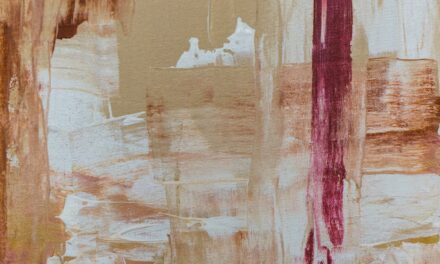The origins of Chinese brush calligraphy can be traced back over two millennia, deeply intertwined with the evolution of Chinese writing itself. The earliest forms of Chinese characters emerged during the Shang Dynasty (c. 1600–1046 BCE), where inscriptions on oracle bones reveal a rudimentary system of symbols used for divination and record-keeping.
As the art of writing developed, so too did the tools and techniques employed by scribes and scholars. The introduction of the brush, made from animal hair and bamboo, marked a significant turning point in the practice of writing, allowing for greater fluidity and expression in the formation of characters. By the time of the Han Dynasty (206 BCE–220 CE), brush calligraphy had begun to flourish as an esteemed art form.
Scholars and poets began to appreciate not only the functional aspect of writing but also its aesthetic potential. The brush became a symbol of cultural refinement, and calligraphy was regarded as a reflection of one’s character and intellect. This period saw the establishment of various styles, each with its own unique characteristics, paving the way for the rich tradition that would follow.
The interplay between philosophy, literature, and visual art during this time laid the groundwork for what would become a revered practice in Chinese culture.
Summary
- Chinese Brush Calligraphy originated in ancient China and has been practiced for over 2,000 years, evolving into a highly respected art form.
- The essential tools for Chinese Brush Calligraphy include brushes, ink, paper, and inkstone, each with its own unique characteristics and importance in the art form.
- Basic strokes and techniques in Chinese Brush Calligraphy include the “dot”, “horizontal stroke”, “vertical stroke”, “hook”, and “press-lift” techniques, which form the foundation for creating characters.
- Styles and variations in Chinese Brush Calligraphy include regular script, running script, cursive script, and seal script, each with its own distinct characteristics and artistic expression.
- Famous Chinese Calligraphers such as Wang Xizhi, Yan Zhenqing, and Su Shi have made significant contributions to the art form, influencing its development and popularity throughout history.
- Chinese Brush Calligraphy plays a significant role in Chinese culture, being used in traditional art, poetry, and as a means of self-expression and meditation.
- Learning Chinese Brush Calligraphy can be done through classes and workshops, where students can learn from experienced calligraphers and practice the art form in a supportive environment.
- Modern applications of Chinese Brush Calligraphy include its use in contemporary art, design, and as a form of cultural preservation and expression in the digital age.
Tools and Materials for Chinese Brush Calligraphy
The tools and materials used in Chinese brush calligraphy are integral to the art form, each contributing to the final outcome of a piece. The primary tool is, of course, the brush itself, which comes in various shapes and sizes, each suited for different styles and techniques. Traditional brushes are made from animal hair—such as goat, wolf, or rabbit—affixed to a bamboo handle.
The choice of hair affects the brush’s flexibility and ink-holding capacity, allowing artists to create a range of strokes from delicate lines to bold sweeps. In addition to brushes, calligraphers require ink, which is traditionally made from soot mixed with water. Ink sticks are ground on an ink stone to produce a rich, dark liquid that varies in consistency depending on how much water is added.
The quality of the ink is paramount; it should flow smoothly from the brush while maintaining its vibrancy on paper. The paper itself is another crucial element; rice paper or Xuan paper is often preferred for its absorbency and texture, which can enhance the visual impact of the calligraphy. Finally, a seal—often carved from stone—can be used to stamp the finished work, adding a personal touch and signifying authenticity.
Basic Strokes and Techniques
At the heart of Chinese brush calligraphy lies a series of fundamental strokes that form the building blocks of all characters. These strokes include the horizontal line (heng), vertical line (shu), dot (dian), and various curves and angles that combine to create more complex forms. Mastery of these basic strokes is essential for any aspiring calligrapher, as they provide the foundation upon which all characters are constructed.
Each stroke requires a different approach in terms of pressure, speed, and angle, demanding both precision and fluidity. Practising these strokes involves not only repetition but also an understanding of rhythm and balance. Calligraphers often engage in “stroke practice,” where they focus on perfecting individual strokes before attempting to form complete characters.
This process encourages a deep connection between mind and body, as the artist learns to control their movements with grace and intention. Over time, as one becomes more adept at executing these basic strokes, they can begin to explore more advanced techniques such as varying line thickness and incorporating dynamic movement into their work.
Styles and Variations in Chinese Brush Calligraphy
Chinese brush calligraphy encompasses a diverse array of styles, each with its own historical significance and aesthetic appeal. Among the most prominent styles are Regular Script (Kai Shu), Running Script (Xing Shu), and Cursive Script (Cao Shu). Regular Script is characterised by its clear and structured forms, making it the most widely used style for formal writing.
It serves as an excellent foundation for beginners due to its legibility and systematic approach. Running Script offers a more fluid and spontaneous expression, allowing for greater creativity in stroke formation while still maintaining recognisable character shapes. This style is often favoured by those who wish to convey emotion through their writing.
Cursive Script takes this fluidity to an extreme, with strokes flowing into one another in a manner that prioritises artistic expression over legibility. Each style reflects different philosophies regarding the relationship between form and function in writing, showcasing the versatility of brush calligraphy as an art form.
Famous Chinese Calligraphers and their Contributions
Throughout history, numerous calligraphers have left an indelible mark on the art form, each contributing unique perspectives and innovations. One such figure is Wang Xizhi (303–361 CE), often referred to as the “Sage of Calligraphy.” His work in Running Script set a standard that continues to influence calligraphers today. Wang’s ability to blend spontaneity with structure has made his pieces highly sought after, with many considering his work to embody the pinnacle of artistic expression in calligraphy.
Another notable figure is Yan Zhenqing (709–785 CE), whose Regular Script is celebrated for its strength and character. Yan’s approach emphasised the importance of personal style within traditional frameworks, encouraging future generations to develop their own voices while respecting established techniques. His contributions not only enriched the practice of calligraphy but also elevated it as a respected art form within Chinese culture.
These historical figures exemplify how individual creativity can flourish within a rich tradition, inspiring countless artists across centuries.
The Role of Chinese Brush Calligraphy in Chinese Culture
Chinese brush calligraphy holds a significant place within Chinese culture, serving as both an artistic expression and a means of communication. It is often regarded as one of the highest forms of visual art in China, reflecting philosophical ideals such as harmony, balance, and the pursuit of beauty. Calligraphy is frequently associated with Confucian values, emphasising discipline and moral integrity; thus, mastering this art form is seen as a pathway to personal cultivation.
Moreover, calligraphy plays an essential role in various cultural practices and celebrations. It is common to see calligraphic works displayed during festivals or given as gifts during significant life events such as weddings or birthdays. The act of writing itself is often viewed as meditative, allowing practitioners to connect with their inner selves while engaging with centuries-old traditions.
In this way, Chinese brush calligraphy transcends mere aesthetics; it embodies a cultural heritage that continues to resonate deeply within contemporary society.
Learning Chinese Brush Calligraphy: Classes and Workshops
For those interested in delving into the world of Chinese brush calligraphy, numerous classes and workshops are available worldwide. Many cultural institutions offer courses that cater to various skill levels, from complete beginners to advanced practitioners seeking to refine their techniques. These classes typically cover essential topics such as stroke order, character formation, and stylistic variations while providing hands-on experience with traditional tools.
In addition to formal classes, community workshops often foster a sense of camaraderie among participants. These gatherings allow individuals to share their experiences and learn from one another in a supportive environment. Many instructors emphasise not only technical skills but also the philosophical aspects of calligraphy, encouraging students to explore their personal connections to this ancient art form.
As interest in Chinese culture continues to grow globally, opportunities for learning brush calligraphy are becoming increasingly accessible.
Modern Applications of Chinese Brush Calligraphy
In recent years, Chinese brush calligraphy has found new life in contemporary contexts, merging traditional techniques with modern aesthetics. Artists are experimenting with mixed media approaches that incorporate elements such as digital technology or installation art, expanding the boundaries of what calligraphy can represent. This fusion allows for innovative expressions that resonate with younger audiences while honouring the rich heritage from which they stem.
Furthermore, calligraphy has gained popularity in graphic design and branding, where its elegant forms can convey cultural significance while appealing to modern sensibilities. Businesses often utilise calligraphic elements in logos or promotional materials to evoke authenticity and craftsmanship. As globalisation continues to influence artistic practices worldwide, Chinese brush calligraphy stands at a fascinating crossroads—where tradition meets innovation—inviting new generations to engage with its beauty and depth in ever-evolving ways.
If you are interested in exploring different art forms, you may also enjoy reading about


